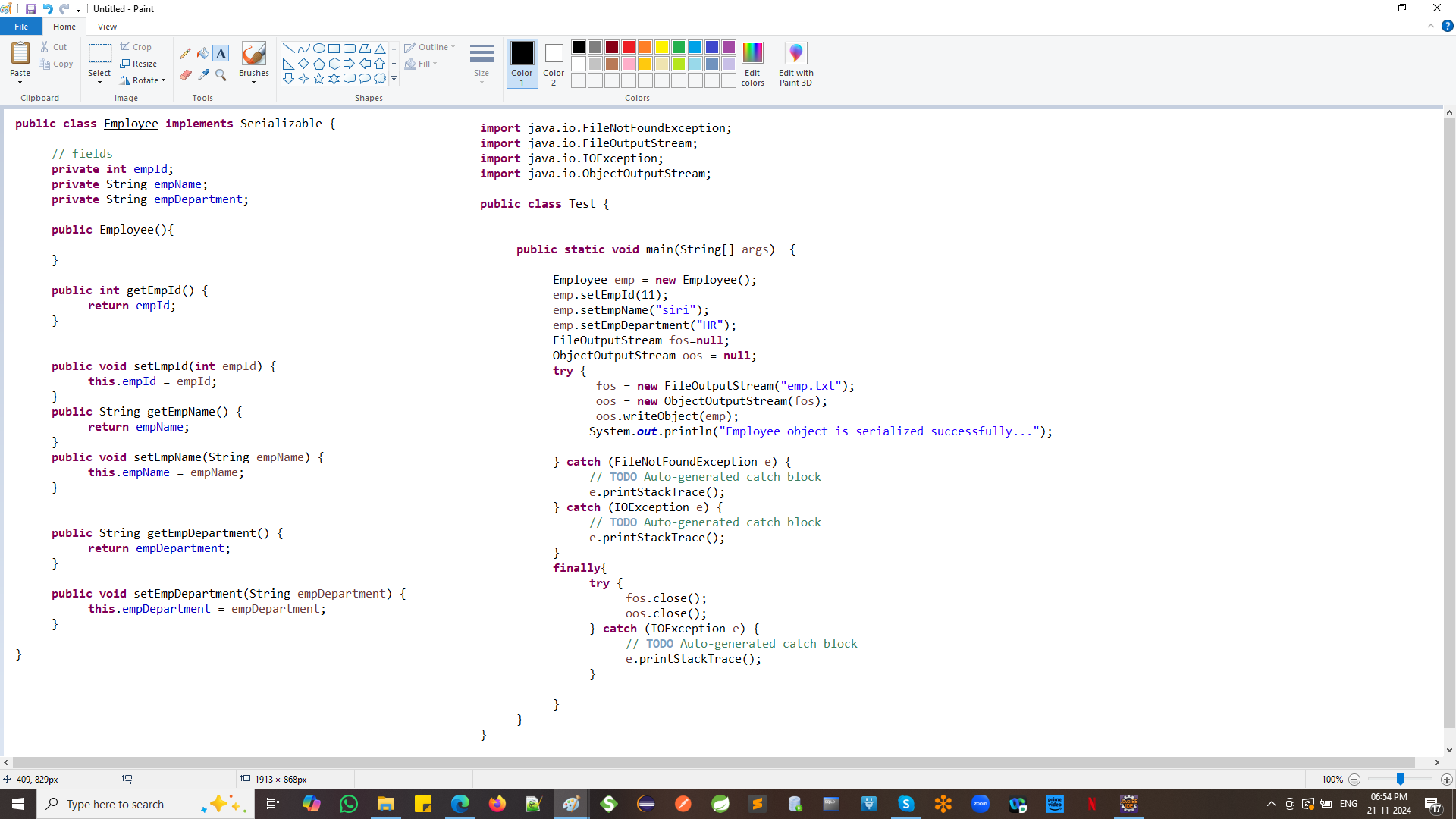Week 116 — How can one read the contents of a file from inside a Java program?
Question of the Week #116
How can one read the contents of a file from inside a Java program?
9 Replies
The
InputStream and Reader classes allow reading binary and textual data from various sources including the network or files. These can be obtained using the Files.newInputStream and Files.newBufferedReader methods.
In addition to that, the
Files class provides many other methods for accessing files. One of these is the readAllLines method which returns a List containing all lines in the file:
This is also possible using a Stream:
To read an entire file into memory, the Files.readString and Files.readAllBytes methods can be used:
The Files.copy method allows copying a file and Files.move can be used to move a file:
📖 Sample answer from dan1st
To read a file we need the File object as and pass that file to good old Scanner which will traverse that file as it would to any normal console input.
Since we might be passing a file that doesn't exist so we also need to handle the exception
import java.io.*;
import java.util.Scanner;
public class Main {
public static void main(String[] args) throws FileNotFoundException {
File file = new File("src\temp.txt");
Scanner sc = new Scanner(file);
while (sc.hasNext()){
System.out.println(sc.nextLine());
}
}
}
Submission from lunatic69noob
import java.io.*;
public class FileReaderExample {
public static void main(String[] args) {
try (BufferedReader reader = new BufferedReader(new FileReader("example.txt"))) {
String line;
while ((line = reader.readLine()) != null) {
System.out.println(line);
}
} catch (IOException e) {
e.printStackTrace();
}
}
}
Submission from chillkillsayeh
you can use serialization and de-serialization mechanism to read and write data in to a file from java program. it directly write contents of an object into a file using FileInputStream , FileOutputStreams , ObjectInputStream and ObjectOutputStream
Eg: in case of an employee object


this reads and store object data in file in a serialized way
Submission from nyx.enigmatic
How can one read the contents of a file from inside a Java program?
In this short tutorial we review multiples ways to read the content of a file with Java. I am using Java 21 for the code examples but the code is compatible with old java versions. If you are continue using Java 8 in 2025, please consider updating your Java version, this 2025 year we have a new Java LTS release, Java 25.
I will start with my favorite one, reading the content of a .txt file with Java.
Imagine that we have a txt file with the next content, I included the line number of each line in the file:
Files.readAllLines
The next is the Java program to read the content of the file line by line:
If you are using Java 11+, you can execute the command
java Example1.java to compile and execute the program in one step, the nex is the output code:
The code is simple, we use the Files.readAllLines method to read all the lines of the file and store them in a List<String>. Then we iterate over the list and print each line.
BufferedReader
The next code example shows how to read the content of a file using a BufferedReader we use the same .txt file. This pattern is more efficient for reading large files because with Files.readAllLines we are storing the whole file content in memory at once, and with BufferedReader we are reading line by line.
when you execute the program, the output will be the same as the previous example:
Files.readAllBytes
This time we read the file content in bytes format, this pattern of saving the file content in a variable is very common used when saving the file content in a database or sending the content through a network:
The output will be the content of the file in bytes format like the next:
This time I am not pasting the whole output because it is too long, we are reading one character one by one. Remember that spaces and line breaks are also characters.
At the end we have all the file content in a byte[] variable.FileInputStream
The output will be the content of the file in chunks of bytes.
This pattern is very efficient when you want to do something with each chunk of bytes, for example maybe are you uploading a big file like a video file to a Object Storage so you can upload the file in chunks rather than a big operation.
These ways of reading a file in Java are the most common that I saw in my professional career, I know that there are other ways of reading a file, but to cover all of them in this tutorial will be too long.
⭐ Submission from pablohdz